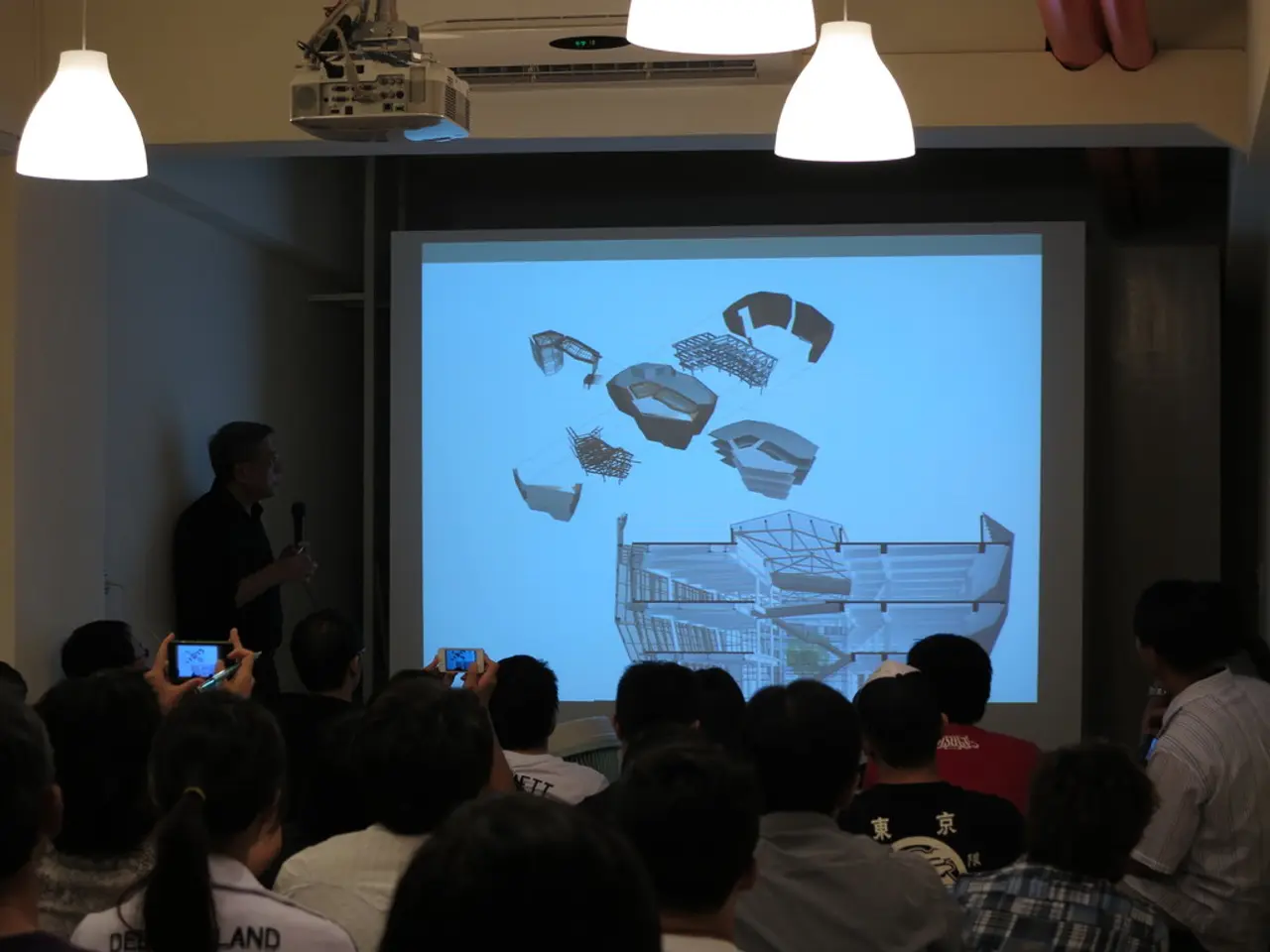The Impact of the Law of Similarity on Web Design Architecture
In the realm of design, a fundamental principle from Gestalt psychology, a branch of psychology that explores how the human brain perceives complex visual information, plays a crucial role: The Law of Similarity. This principle states that elements that share similar attributes, such as color, shape, size, or texture, are perceived as belonging to the same group or pattern by the human brain [2][3].
This grouping creates a sense of unity and helps distinguish related objects from others in a visual field. In the world of design, this principle is applied to organize content and improve usability by visually grouping related elements. For instance, buttons with the same color and style on a navigation menu are intuitively understood as having a similar function, even if they lead to different places [2][4].
Designers use similarity to establish visual hierarchy and enhance user experience by making interfaces more understandable and cohesive. Consistent use of colors, fonts, shapes, or textures helps users quickly identify related items, guide their attention, and create a harmonious flow through information or actions. This principle is also fundamental in branding, reinforcing identity through uniform visual treatments [2][4].
The Law of Similarity extends beyond the digital realm, applying to advertisements, physical places, and more, ensuring that information is communicated effectively and interestingly [1]. By thoughtfully applying this principle, designers can create visual hierarchies that guide users' attention, making designs more intuitive and user-friendly [1][2][4].
However, while consistency is key, breaking patterns can also be beneficial. It is essential to make an effort to break patterns only after fully understanding the standard and doing so for particular intentions. Balancing the similarity principle with creative diversity prevents monotony by incorporating different blocks of colors, shapes, and layouts [2].
Great design is a careful balance of artistry and strategy. By thoughtfully applying key design principles, designs can become intuitive, memorable, and effective. The Law of Similarity, a core principle of Gestalt psychology, is one such tool that designers can leverage to create effective, user-friendly, and aesthetically pleasing designs [1][2][4].
References:
[1] Law of Similarity: A Powerful Design Principle. (n.d.). Retrieved from https://www.nngroup.com/articles/law-of-similarity/
[2] The Law of Similarity – A Key Principle in User Experience Design. (n.d.). Retrieved from https://www.smashingmagazine.com/2019/03/law-of-similarity-key-principle-user-experience-design/
[3] Gestalt Psychology: Principles of Perception. (n.d.). Retrieved from https://www.psychologytoday.com/us/basics/gestalt-psychology
[4] The Law of Similarity in Branding and Design. (n.d.). Retrieved from https://www.brandwatch.com/blog/the-law-of-similarity-in-branding-and-design/
Technology plays a vital role in facilitating the design process, enabling designers to apply principles from Gestalt psychology such as the Law of Similarity with increased ease and precision. Designers can utilize advancements in technology to create visually striking and user-friendly designs by implementing consistent color schemes, fonts, shapes, or textures, following the Law of Similarity principles learned from psychology.




